#Biting Stonecrop
Explore tagged Tumblr posts
Text


Biting stonecrop
#forest#nature#beauty#photographers on tumblr#artists on tumblr#original photographers#original photography#photography#aesthetic#Washington#pnw#westcoastbestcoast#art#vsco#pacific northwest#explore#travel#cottagecore#naturecore#grandmacore#p
141 notes
·
View notes
Text
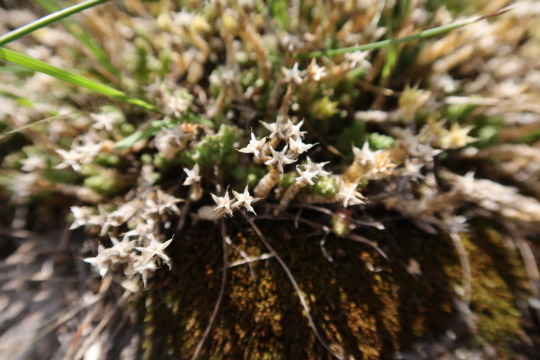
Sedum acre — goldmoss stonecrop a.k.a. biting stonecrop
4 notes
·
View notes
Text
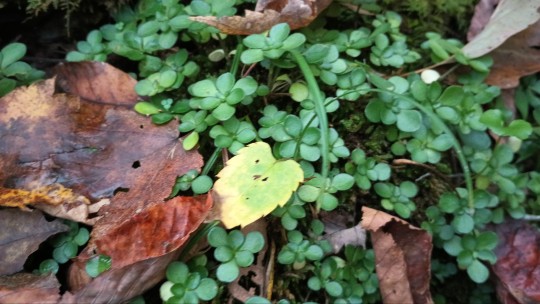
Woodland Stonecrop
Found and photographed: on an appalachian mountain biking trail in West Virginia
A pretty snack in your backyard? Low maintenance and beautiful, this succulent is the full package.
See more photos, and learn about Woodland Stonecrops below the cut!


You can eat it, use it on injuries, and it's local!
Named Stonecrop because of its ability to thrive atop boulders. This resilient plant survives in low sunlight and shallow soil by using its succulent leaves to retain water for long periods of time.
This could make a great low maintenance addition to your garden! It even flowers white April-May.
Medicinally, it can be used like aloe, leaves broken open and spread the gel inside on warts, insect bites, or burns to help soothe pain. It has even been said to have a cooling effect.
Cooking! This is my first edible plant, I hope you're excited to learn!
All parts of the Stonecrop plants are edibles from flowers to roots.
The leaves have been said to be edible raw, like in a salad, or you could cook them as pot herbs.
The roots of Stonecrop plants have been said to have a peppery, bitter taste, a good addition to spice up a dish! The roots are best harvested before the plant flowers, as the texture after flowering is unpleasant.
Edibility: Edible! All parts
Rarity: Common
Genus: Sedum
Regions: Eastern North America, from Arkansas to the East Coast.
Please do your own research, I am an enthusiast not a scientist. I'm here to share and have fun.
All photos taken by me: Toast Loafley/Juno S.
#nature#nature photography#succulents#medicinal plants#plants#plantblr#gardening#foraging#plant identification#ToastLoafley
13 notes
·
View notes
Photo

Sedum acres
I have posted this little guy before, but the wikipedia page has been updated since then (yeah I use wikipedia, fight me).
Here is a new list of real, official names for this plant: Goldmoss Stonecrop Mossy Stonecrop Goldmoss Sedum Biting Stonecrop Wallpepper and Welcome Home Husband Though Never So Drunk [citation needed]
Last time I posted this I was all about that Wallpepper. But that’s not a name, that’s a sentence! A name is a quick thing to identify, otherwise why not go with “small perennial type of yellow plant that is cute” as a name?
“Oh look mother, there are some what a piece of work is man how noble in reason how infinite in faculty in form and moving how express and admirable’s growing in this garden, my favorite!”
(via)
#Sedum acres#Sedum#Goldmoss Stonecrop#Mossy Stonecrop#Goldmoss Sedum#Biting Stonecrop#Wallpepper#Welcome Home Husband Though Never So Drunk#names#rants#stupid things from me#best names#yellow#gold#flowers#cute
50 notes
·
View notes
Text



Plant of the Day
Thursday 2 February 2023
The invasive succulent Sedum acre (biting stonecrop, bird's bread, common stonecrop, country pepper, creeping Jack, gold dust, golden moss, Jack of the buttery, love and tangle, tangle tail, wall moss, wall pepper, creeping Charlie) can be useful for green roofing. It naturally produces a mat able to withstand drought and full sun, here water stress has caused a reddish colouring to the fleshy leaves. Yellow, star shaped flowers are produced from May to July and the nectar is popular with bees.
Jill Raggett
#sedum#bitingstonecrop#stonecrop#bird'sbread#commonstonecrop#countrypepper#creepingJack#golddust#Jackofthebuttery#goldenmoss#loveandtangle#tangletail#wallmoss#wallpepper#creepingCharlie#succulents#greenroof#gardenbench#plants#writtledesign#gardens#horticulture#woodwork#bench#seat
70 notes
·
View notes
Photo

15.06.19 didnt know what it was when took the picture, accordind to wiki it is “Sedum acre, commonly known as the goldmoss stonecrop, mossy stonecrop, goldmoss sedum, biting stonecrop and wallpepper, is a perennial flowering plant in the family Crassulaceae. It is native to Europe, but also naturalised in North America, Japan and New Zealand.“
5 notes
·
View notes
Photo



(via Ireland 2008 Coastal Flowers (definitives) - Stamps of the World)
20c ~ thrift, Armeria maritima,
50c ~ biting stonecrop, Sedum acre
82c ~ sea aster, Aster tripolium
#sea aster#flower stamps#2008 stamps#Ireland#Eire#Flora stamps#lcstamps#lcstampswishlist#postage stamps#stamps
2 notes
·
View notes
Text
Noms de flors en català, castellà i anglès
Acabo de comprar una guia de flors de Catalunya que posa els noms en català, castellà, i anglès així que pensava que potser us interessaria i vaig decidir penjar-los aquí! // Acabo de comprar una guía de flores de Catalunya que tiene los nombres en catalán, español, e inglés así que pensaba que tal vez les interesaría a ustedes y decidí colgarlos aquí! // I just bought a guide to the flowers of Catalunya that has the names in Catalan, Spanish, and English so I thought maybe they'd interest you guys and I decided to post them here!
Nom scientífic/scientific name - nom en català - nombre en español - name in English
Cirsium arvense - calcida - cardo cundidor - creeping thistle
Galactites tomentosa - calcida blanca - cardo cuajaleches - purple milk thistle
Silybum marianum - card marià - cardo mariano - blessed thistle
Pallenis spinosa - gravit - estrellada - spiny golden star
Urtica dioica - ortiga - ortiga mayor - stinging nettle
Dipsacus fullonum - cardó - cardancha - common teasel
Parietaria judaica - parietària - albahaquilla - pellitory of the wall
Matricaria recutita - camamilla - manzanilla - (wild) chamomille
Anacyclus clavatus - panigroc - manzanilla loca - whitebuttons
Centaurea aspera - bracera - brasera - rough star-thistle
Bellis perennis - margadoida perenne - margarita - daisy
Cichorium intybus - xicoira - achicoria silvestre - chicory
Achillea millefolium - milfulles - milenrama - yarrow
Leucanthemum vulgare - margarida - margarita mayor - oxeye daisy
Inula viscosa - olivarda - hierba mosquera - sticky samphire
Calendula arvensis - boixac de camp - maravilla silvestre - field marigold
Sonchus olerachus - lletsó d'hort - cerraja - smooth sow thistle
Urospermum dalechampii - amargot - lechugilla - smooth golden fleece
Sonchus tenerrimus - lletsó - cerraja fina - slender sow thistle
Taraxacum officinale - pixallits / dent de lleó - diente de león - dandelion
Senecio inequidens - seneci del Cap - senecio del Cabo - narrow-leaved ragwort
Ornithogalum divergens - llet d'ocell - leche de pájaro - star of Bethlehem
Aphyllanthes monspeliensis - jonça - junquillo de flor azul - blue aphyllanthes
Muscari comosum - calabruixa grossa - jacinto penachudo - tassel hyacinth
Muscari neglectum - calabruixa petita - nazarenos - grape hyacinth
Dipcadi serotinum - marcet - jacinto bastardo - Dipcadi
Allium roseum - all - ajo de culebra - rosy garlic
Aspholdelus fitulosus - porrassí - gamoncillo - pink asphodel
Asphodelus cerasiferus - porrassa - gamón - branched asphodel
Anagallis arvensis - anagall - hierba coral - blue pimpernel
Antirrhinum majus - conillets - conejitos - common snapdragon
Misopates orontium - gossets - berrecilla - small snapdragon
Veronica persica - verònica pèrsica - azuletes - Persian speedwell
Convolvulus althaeoides - corretjola de serps - campanilla rosa - mallow bindweed
Convolvulus arvensis - corretjola - corregüela - field bindweed
Verbascum sinnuatum - trepó ploraner - gordolobo - wavy-leaf mullein
Verbascum pulverulentum - trepó pulverulent - gordolobo - hoary mullein
Scandix pecten-veneris - agulles - agujas de pastor - shepherd's-needle
Foeniculum vulgare - fonoll - hinojo - fennel
Daucus carota - pastanaga - zanahoria silvestre - wild carrot / Queen Anne's lace
Eryngium campestre - panical comú - cardo corredor - field eryngo
Conium maculatum - fonollassa - cicuta mayor - poison hemlock
Tordyllium maximum - tordili - tordilio - hartwort
Sanguisorba minor - herba de tall - pimpinela menor - salad burnet
Erodium malacoides - filamaria - relojes - soft stork's-bill
Erodium cicutarium - cargola cicutària - aguja de pastor - common stork's-bill
Geranium rotundifolium - suassana rotundifòlia - geranio de hoja redonda - round-leaved geranium
Geranium dissectum - gerani de fulla retallada - geranio cortado - cut-leaved crane's-bill
Althaea hirsuta - altea hirsuta - cañamera azul - hairy marshmallow
Malva sylvestris - malva major - malva común - common mallow
Malva neglecta - malva de fulla rodona - malva enana - dwarf mallow
Hypericum perforatum - herba de Sant Joan - pericón - St. John's wort
Himanthoglossum roberantium - bàrlia - orquídea gigante - Robert's barlia
Sedum acre - crespinell - pampajarito - biting stonecrop
Sedum reflexum - crespinell rupestre - uvas de gata - blue stonecrop
Umbilicus rupestris - barretets - ombligo de Venus - pennywort
Plantago coronopus - cerverina - hierba cervina - buck's-horn
Plantago lanceolata - plantatge de full estreta - llantén menor - ribwort plantain / English plantain
Diplotaxis erucoides - ravenissa blanca - rabaniza blanca - white wall rocket
Erucastrum nasturtiifolium - ravenissa groga - oruga salvaje - watercress-leaved rocket
Lobularia maritima - caps blancs - mastuerzo marítimo - sweet alyssum
Borago officinalis - borratja - borraja - borage
Capsella bursa-pastoris - sarronet de pastor - zurrón de pastor - shepherd’s purse
Cynoglossum creticum - besneula crètica - lengua de perro - blue hound’s tongue
Echium vulgare - llengua de bou - viborera - viper’s buglass
Papaver rhoeas - rosella vera - amapola - common poppy
Glaucium corniculatum - cascall banyut - adormidera cornuda - blackspot horn poppy
Fumaria capreolata - fumària enfiladissa - conejillos - white ramping fumitory
Fumaria officinalis - fumària oficinal - palomilla - fumitory
Delphinum verdunense - esperó de sembrat - espuela de caballero - larkspur
Chelidonium majus - herba d’orenetes - celidonia - greater celandine
Ranunculus arvensis - ranuncle arvense - gata rabiosa - buttercup
Nigella damascena - barba d’ermità - ajenuz - love-in-a-mist
Trifolium stellatum - trèvol estrellat - estrella - star clover
Trifolium pratense - trèvol de prat - trébol común - red clover
Bituminaria bituminosa - trèvol pudent - trébol hediondo - scurfy pea
Vicia sativa - vecera - arveja - common vetch
Vicia cracca - garlanda - alverja silvestre - cow vetch
Lathyrus clymenum - guixó articulat - arvejón - Spanish vetchling
Lathyrus aphaca - gerdell - afaca - yellow vetchling
Lotus corniculatus - lot corniculat - trébol de cuernos - common bird’s foot trefoil
Stachys ocymastrum - espinadella peluda - rabo de zorra - hairy woundwort
Calamintha nepeta - rementerola - calaminta - lesser calamint
Origanum vulgare - orenga - orégano - oregano / wild marjoram
Salvia pratensis - tàrrec de prat - salvia de prado - meadow clary
Salvia verbenaca - tàrrec comú - balsamilla - wild clary
Lamium amplexicaule - flor-robi - gallitos - henbit dead-nettle
Marrubium vulgare - malrubi - marrubio blanco - white horehound
Silene vulgaris - colís - colleja - bladder campion
Silene gallica - silene gàl·lica - carmentilla - common catchfly
Silene nocturna - silene nocturna - silene nocturna - night-flowering catchfly
Stellaria media - morró - pajarera - chickweed
Dianthus hyssopifolius - clavell de pastor - clavel de monte - fringed pink
Cerastium glomeratum - cerasti aglomerat - oreja de ratón - sticky mouse-ear
Paronychia argentea - paroniquia argentada - sanguinaria blanca - silver nailroot
Galium aparine - apegalós - amor de hortelano - cleavers
Galium verum - espunyidella groga - cuajaleche - lady’s bedstraw
Mercurialis annua - melcoratge - mercurial - annual mercury
Portulaca oleracea - verdolaga - verdolaga - (green) purslane
Euphorbia characias - lleteresa - euforbia encarnada - large Mediterranean spurge
Euphorbia helioscopa - lleterola d’hort - lecheruela - madwoman’s milk
Euphorbia serrata - lleteresa serrada - asnaballo - serrate spurge
Some of these names are a bit more official (like in English a lot of times we’ll just call it “spurge” instead of the specific type of spurge), but hopefully this helps you get an idea for what to call these plants in one (or more!) of these languages.
#this is so long rip#i thought the language comparison was cool though#especially with the latin#plus maybe (???) some of y'all are plant nerds like me and care about this#although that might be too much to ask for#some of these i know very well#some of them i have no idea what they are#catalan and spanish speaking followers feel free to add your wisdom#(english speakers as well if i missed a mistake in the english translation bc i did catch one but also idk what half of these are)#spanish#catalan#vocab lists#catalan:general#catalan:reference#catalan:vocab#spanish:general#spanish:reference#spanish:vocab#general:vocab#general:reference
43 notes
·
View notes
Text
I am in love with both Bakugo and Kirishima. And when I shove them together, I feel my insides bubble with happiness.
So, here! Take my creation of bubbling happiness that I plan to make into multiple parts of a BakuKiri love story. It’s a florist/tattoo artist AU.
I just couldn’t resist.
Do you need help setting up this morning?
The text came early. Much earlier than he had been used to hearing from him. Though on this particular day, he supposed it made sense. He was up before his usual wake up time as well.
No.
Bakugo set his phone down on the front counter of the shop, his hand taking the steaming mug of coffee as an occupant instead. It felt nice against his palm, heat soaking into his flesh making him aware of just how cold the rest of him was. Putting the mug up to his lips, he let the warm liquid rest on his tongue, his mind focuses on the bitterness.
He heard the phone vibrate on the table next to him, but ignored it. He didn’t have the patience to deal with Midoriya’s insistent kindness. This was his shop, his new business opening, he’d handle it himself.
Hearing the buzz of his phone again, he pushed himself away from the counter, furthering himself from the instinct to check what that idiot had replied with. Bakugo didn’t want his help. Not today.
His free hand found the keys resting heavy in his pocket, their weight steady in his palm as he thumbed for the one he needed. A small gold piece, short and far too insignificant looking to hold any meaning that could be put onto it. Running the pad of his thumb of the ridges a single time, he shoves it into the lock and turned, pulling open the rolling metal door to let in a rush of fresh air and—
“Fucking Christ!”
—a goddamn annoyance.
Bakugo only allowed himself a small second to be startled before he let his signature scowl take over his features again. It was too early to have a random redhead shouting and staring as if he was about to be murdered in the streets. Which, he’d admit, didn’t sound like a bad idea if this guy kept up the way he was staring.
“What?” Bakugo grumbled at the stranger, though gave no time for a response as he turned his back on the redhead to set to work. He had enough to do this morning without being bothered by a random guy out for a walk at an ungodly hour.
Placing his mug on a side table, his hand reached for the various bins of flowers. Lavenders, daisies, Russian sage. They require lots of sun. With the shop sitting on the corner, he’ll put them near the front door. It gets more light over there.
Pulling the bin of lavender into his arms, he turned to do just that. But there was something annoyingly in his way. Something with that stupid red hair that he assumed had gotten the message to keep moving along. This time he didn’t give a verbal acknowledgement, instead giving a small grunt drawn home with a glare before continuing in his work. If the idiot wanted to gawk at nothing, then fine. As long as he didn’t get in Bakugo’s way, he could care less.
He’ll put the Shasta daisies next to the lavender. And he’ll put the stonecrop on a step stool or box… no, that wooden crate he found the other day at that thrift store. Then maybe he’d pull that rustic watering can out and arrange the lavender and Russian sage in the top of it. That’d be a nice sight when entering the shop. Maybe he’d look into some of those hanging potted plants to put above the front door and along the top of the rolling garage door. Get rid of the sterility of the metal and replace it with—
“This is a flower shop?”
Bakugo hands stopped in their arrangement of begonias, surprised by the question considering the only inventory within sight were plants and flowers. His gaze rose to meet matching crimson eyes, though the ones that stared back at him held a curiosity that confused the blond. What was this guy still hanging around for?
“Obviously,” he responded, though his voice did not hold the same bite as before. Now taking another look at the stranger, he noticed more than just his obnoxious red hair. He took note of the various piercings lining his ears, including one that dangled from his middle ear to just below his earlobe. There was also the lip and nose ring. Both thin and black in color and hugging the flesh they surrounded. There was also the peek of ink that stretched just beyond the low collar of his shirt. Just enough to make Bakugo curious to what was printed there. Just enough to be annoying.
“It’s beautiful,” the redhead commented, a smile pulling at his lips, “it’ll be a much better sight than an abandoned sex shop.”
Bakugo grimaced at the mention. He had bought the place as is, which meant he had to deal with the clean up of said sex shop. It was not something he wished to relive. Nor did he ever desire to step foot into one of those places ever again.
“I’m Kirishima Eijiro, by the way,” he greeted brightly, his hand extending out to reveal black covered fingers. Bakugo raised his brow at them before the offer was retracted. “Sorry, it’s charcoal. Sometimes I get in such a hurry, I don’t wash it all off properly,” he held a sheepish smile on his features before shoving his hands deep into the pockets of his tattered jean jacket.
“Anyway,” Kirishima continued before Bakugo could take the chance to respond, “best be gettin’ to work. I gotta client showing up bright and early. I’ll see you around…”
He paused, which Bakugo hadn’t expected. He had been talking the whole time, he wondered if what they were really having was a conversation. So, with another moment and a shift of begonias in his arms, he answered, “Bakugo Katsuki.”
A smile beamed across Kirishima’s features then, his charcoal covered hand raising again to give a small wave before turning to quickly cross the street for the tattoo shop. Somehow Bakugo wasn’t surprised by the job placement, though he hadn’t expected to meet his neighbor so soon. Nor could he ever anticipated how well.
#bnha#boku no hero academia#my hero academia#bakugo#bakugo katsuki#katsuki#kirishima#kirishima eijiro#eijiro#bakugo x kirishima#kirishima x bakugo#bakukiri#kiribaku#au
63 notes
·
View notes
Photo

These pretty Iceland wildflowers I believe are called Biting Stonecrop. There was a little fly to add some contrast to the bright yellow color.
#wildflowers#biting stonecrop#yellow flowers#iceland#weluvtotravel#pws#nature#original photography#photographer on tumblr#cannon camera
0 notes
Photo










Plates and frontispiece illustration taken from ‘A New Family Herbal’ by Richard Brook.
1) Floral frontispiece
2) Borage, Comfrey, Cowslip, Buckbean
3) Valerian, Saffron, Woodruff, Plantain
4) Pimpernel, Thorn Apple, Bindweed, Deadly Nightshade
5) Centuary, Periwinkle, Honeysuckle, Dodder
6) Goosefoot, Beet, Henbane, Common and Purging Flax
7) Lily of the Valley, Barberry, Water Plantain, Mezereum
8) Biting Persicaria, Stonecrop, Clove Pink, Wood Sorrel
9) Agrimony, Asarabacca, Houseleek, Meadow-sweet
10) Dog Rose, Provence Rose, Strawberry, Tormentil.
Published 1840 by W. M. Clark.
Wellcome Library.
This work is available under the Creative Commons, Public Domain Mark
archive.org
124 notes
·
View notes
Text

Sedum acre — goldmoss stonecrop a.k.a. biting stonecrop
6 notes
·
View notes
Photo

Biting stonecrop (sedum acre) grows in the most unlikely of places - you can find it in sand dunes, wedged between rocks, on concrete walls, and in the tiny wedge of roadside sand between the ashphalt and the curb. It has beautiful yellow flowers, and every time I see it I am reminded of the beautiful improbability of life. https://www.instagram.com/p/BhiILWuHt0s/?igshid=cv4jfs84yzjk
#cancer#sketches#oncology#residency#residencylife#radonc#radiationoncology#hope#honesty#cancerart#cancerartwork#oncologydoodles#oncologyart#stonecrop#doodle#medicineart#radiationtherapy
0 notes
Text
Smiling Irish Eyes
It’s St. Patrick’s Day, and Irish Eyes are smiling. St. Patrick’s Day is more than a day for green clothing, green beer, shamrocks, leprechauns, and pots of gold, although I wouldn’t mind having my own pot of gold right about now. This is a day to celebrate and learn about Irish culture, traditions, and history. By participating in the many celebrations and parades and enjoying the food, drinks, music, and dancing that define Irish culture, St. Patrick’s Day can be a day of fun and learning. As I kickoff the St. Patrick’s Day festivities, I thought it would be a good idea to share some of my favorite wildflowers that are native to Ireland.
All images and information in this post regarding Irish wildflowers are courtesy of http://www.wildflowersofireland.net/. Please visit the Wildflowers of Ireland website to learn more about Irish wildflowers.
Common Name: Bell Heather Scientific Name: Erica cinerea Irish Name: Fraoch Cloigíneach
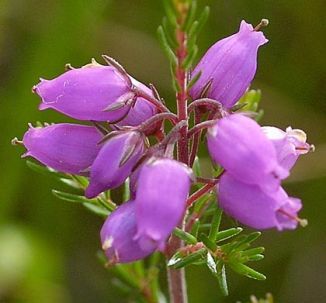
Common Name: Biting Stonecrop Scientific Name: Sedum acre Irish Name: Grafán na gcloch

Common Name: Blackthorn Scientific Name: Prunus Spinosa Irish Name: Draighean

Common Name: Bloody Crane's-bill Scientific Name: Geranium sanguineum Irish Name: Crobh dearg

Common Name: Bluebell Scientific Name: Hyacinthoides non-scripta Irish Name: Coinnle corra
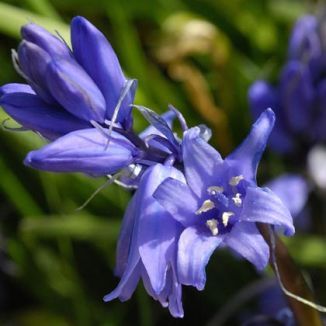
Common Name: Blue-eyed Grass Scientific Name: Sisyrinchium bermudiana Irish Name: Feilistrín gorm
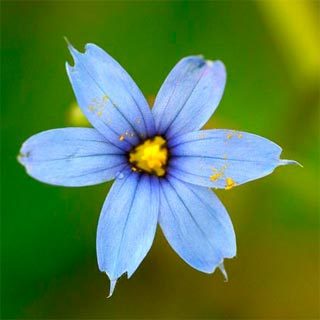
Common Name: Broad-leaved Everlasting-pea Scientific Name: Lathyrus latifolius Irish Name: Peasairín leathanduilleach
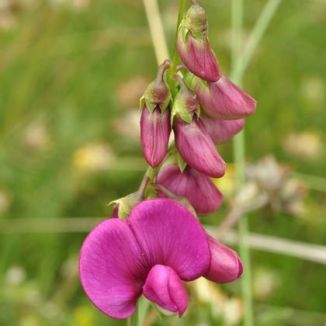
Common Name: Brooklime Scientific Name: Veronica beccabunga Irish Name: Lochall
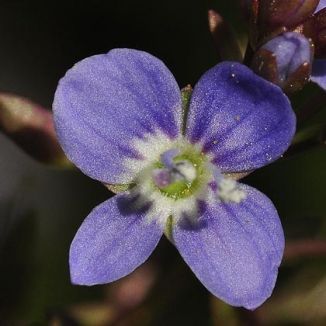
Common Name: Common Bird's-foot-trefoil Scientific Name: Lotus corniculatus Irish Name: Crobh éin
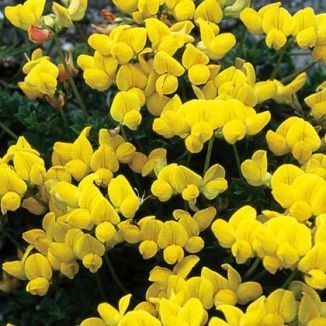
Common Name: Common Poppy Scientific Name: Papaver rhoeas Irish Name: Cailleach dhearg

Common Name: Common Toadflax Scientific Name: Linaria vulgaris Irish Name: Buaflíon

Common Name: Columbine Scientific Name: Aquilegia vulgaris Irish Name: Colaimbín
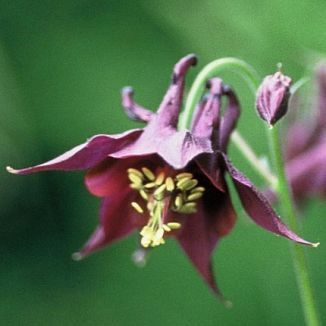
Common Name: Cowslip Scientific Name: Primula veris Irish Name: Bainne bó bleachtáin

Common Name: Dove's-foot Crane's-bill Scientific Name: Geranium molle Irish Name: Crobh bog

Common Name: Druce's Crane's-bill Scientific Name: Geranium x oxonianum Irish Name: Crobh gallda
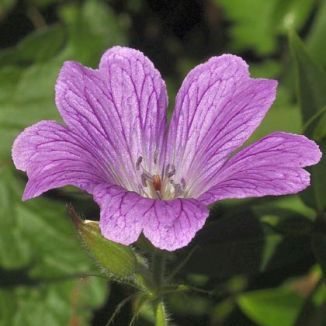
Common Name: Early Dog-violet Scientific Name: Viola reichenbachiana Irish Name: Sailchuach luath

Common Name: Early Marsh-orchid, ssp.coccinea Scientific Name: Dactylorhiza incarnata subsp. coccinea Irish Name: Magairlín dearg

Common Name: Eastern Gladiolus Scientific Name: Gladiolus communis Irish Name: Glaidiólas oirthearach

Common Name: Eyebright Scientific Name: Euphrasia officinalis Irish Name: Glanrosc
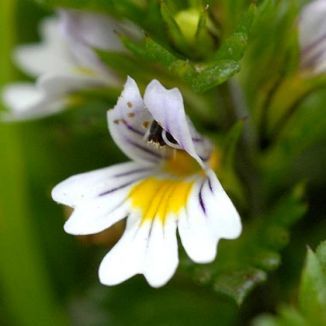
Common Name: Flecked Marsh-orchid Scientific Name: Dactylorhiza incarnata ssp. cruenta Irish Name: Magairlín craorag

Common Name: Flowering Currant Scientific Name: Ribes sanguineum Irish Name: Cuirín
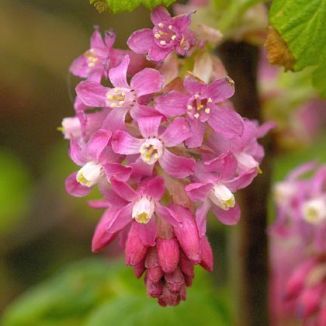
Common Name: Foxglove Scientific Name: Digitalis purpurea Irish Name: Lus mór

Common Name: Fragrant Orchid Scientific Name: Gymnadenia conopsea Irish Name: Lus taghla

Common Name: Goldilocks Buttercup Scientific Name: Ranunculus auricomus Irish Name: Gruaig Mhuire
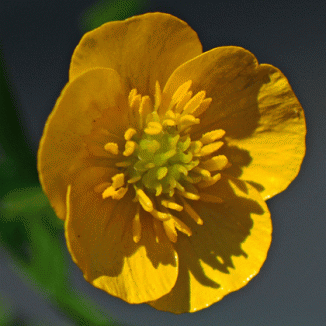
Common Name: Gorse Scientific Name: Ulex europaeus Irish Name: Aiteann gallda
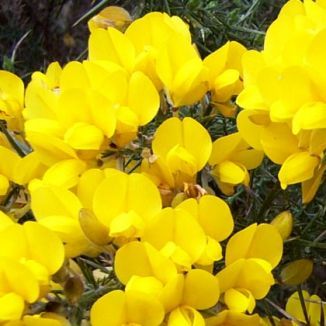
Common Name: Green Alkanet Scientific Name: Pentaglottis sempervirens Irish Name: Boglas spáineach
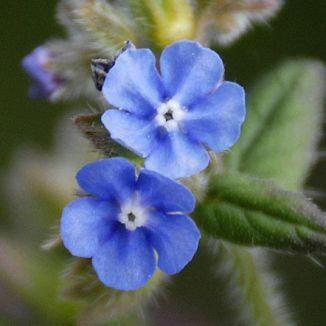
Common Name: Green-winged Orchid Scientific Name: Anacamptis morio Irish Name: Magairlín féitheach
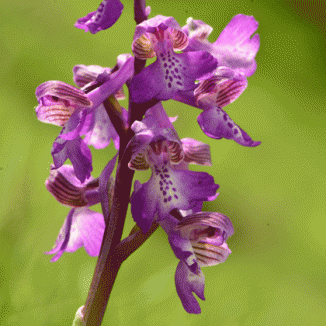
Common Name: Heath Fragrant Orchid Scientific Name: Gymnadenia borealis Irish Name: Lus taghla na móna
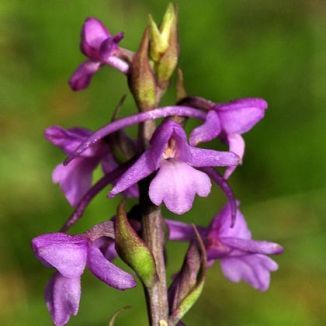
Common Name: Heath Spotted-orchid Scientific Name: Dactylorhiza maculata Irish Name: Na circíní
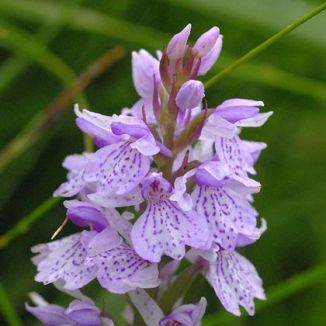
Common Name: Heather Scientific Name: Calluna vulgaris Irish Name: Fraoch mór
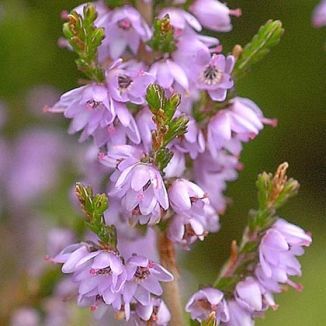
Common Name: Hebridean Spotted-orchid Scientific Name: Dactylorhiza fuchsii ssp. hebridensis Irish Name: Unknown at present
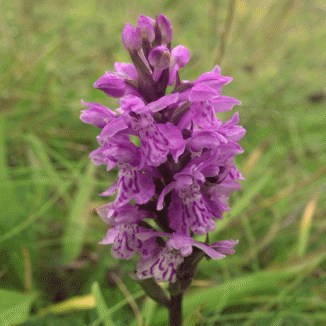
Common Name: Hedgerow Crane's-bill Scientific Name: Geranium pyrenaicum Irish Name: Crobh na bhfál
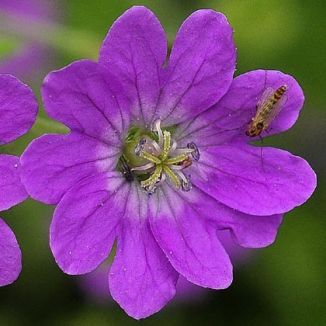
Common Name: Honesty Scientific Name: Lunaria annua Irish Name: Lus na gealaí
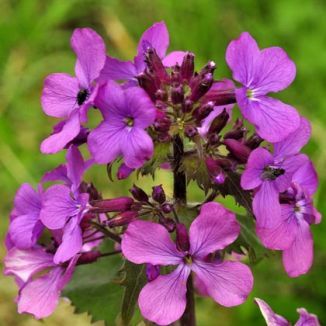
Common Name: Hop Trefoil Scientific Name: Trifolium campestre Irish Name: Seamair dhuimhche

Common Name: Indian Balsam Scientific Name: Impatiens glandulifera Irish Name: Lus na pléisce
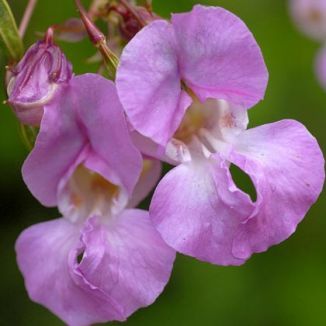
Common Name: Irish Eyebright Scientific Name: Euphrasia salisburgensis Irish Name: Glanrosc gaelach

Common Name: Irish Marsh-orchid Scientific Name: Dactylorhiza Kerryensis Irish Name: Magairlin gaelach
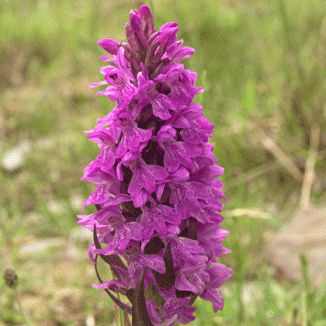
Common Name: Large-flowered Butterwort Scientific Name: Pinguicula grandiflora Irish Name: Leith uisce
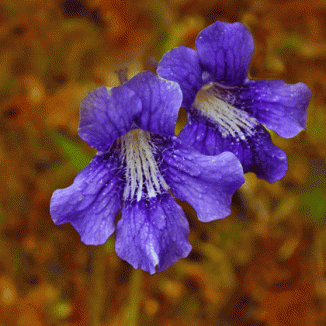
Common Name: Lesser Centaury Scientific Name: Centaurium pulchellum Irish Name: Dréimire beag

Common Name: Mallow Common Scientific Name: Malva sylvestris Irish Name: Lus na meall Muire
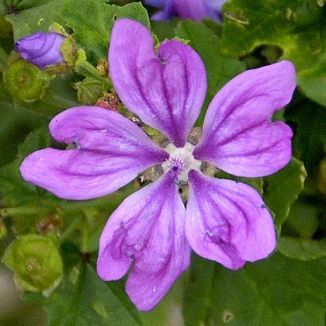
Common Name: Marsh-marigold Scientific Name: Caltha palustris Irish Name: Lus buí Bealtaine
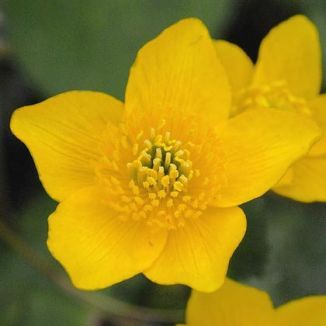
Common Name: Meadow-foam Scientific Name: Limnanthes douglasii Irish Name: Cúr léana

Common Name: Meadow Saffron Scientific Name: Colchicum autumnale Irish Name: Cróch an fhómhair
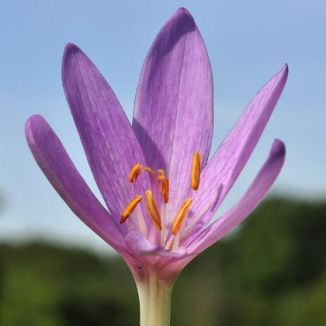
Common Name: Monkeyflower Scientific Name: Erythranthe guttata Irish Name: Buí an bhogaigh
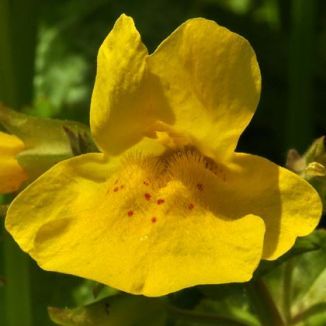
Common Name: Narrow-leaved Helleborine Scientific Name: Cephalanthera longifolia Irish Name: Cuaichín caol
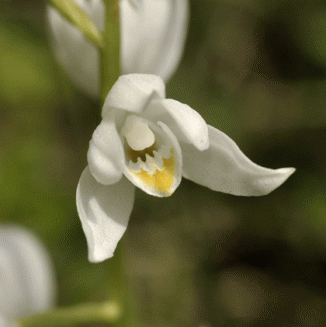
Common Name: Nettle-leaved Bellflower Scientific Name: Campanula trachelium Irish Name: Scornlus
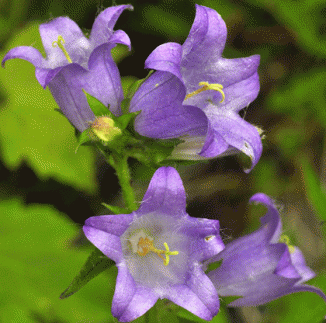
Common Name: Northern marsh-orchid Scientific Name: Dactylorhiza purpurella Irish Name: Magairlín corcra

Common Name: O'Kelly's Spotted-orchid Scientific Name: Dactylorhiza fuchsii var. okellyi Irish Name: Nuacht bhallach Uí Ceallaigh

Common Name: Pencilled Crane's-bill Scientific Name: Geranium versicolor Irish Name: Crobh stríocach

Common Name: Pink-sorrel Scientific Name: Oxalis articulata Irish Name: Seamsóg ghlúineach
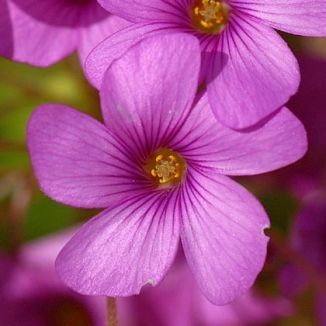
Common Name: Primrose Scientific Name: Primula vulgaris Irish Name: Sabhaircín

Common Name: Pyramidal Orchid Scientific Name: Anacamptis pyramidalis Irish Name: Magairlín na stuaice

Common Name: Rape Scientific Name: Brassica napus Irish Name: Ráib

Common Name: Red Valerian Scientific Name: Centranthus ruber Irish Name: Slán Iomaire

Common Name: Rhododendron Scientific Name: Rhododendron ponticum Irish Name: Róslabhras
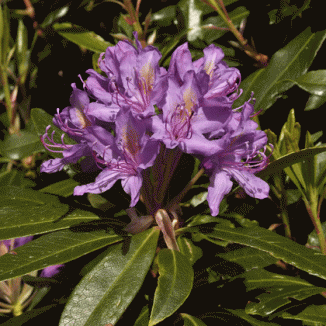
Common Name: Rock Sea-spurrey Scientific Name: Spergularia rupicola Irish Name: Cabróis na gcloch

Common Name: Sand Pansy Scientific Name: Viola tricolor ssp. curtisii Irish Name: Goirmín duimhche
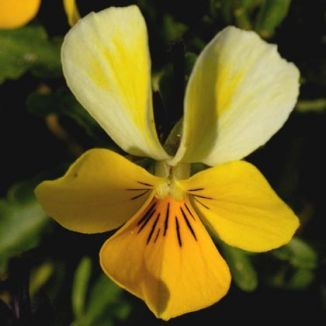
Common Name: Scarlet Pimpernel Scientific Name: Anagallis arvensis Irish Name: Falcaire fiáin

Common Name: Snapdragon Scientific Name: Antirrhinum majus Irish Name: Srubh lao

Common Name: Soapwort Scientific Name: Saponaria officinalis Irish Name: Garbhán creagach
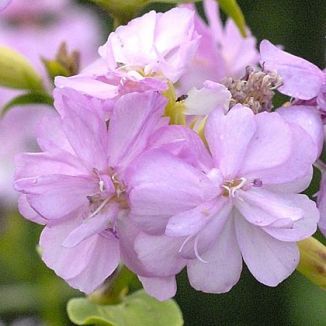
Common Name: Thrift Scientific Name: Armeria maritima Irish Name: Rabhán
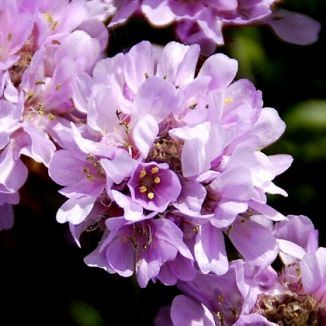
Common Name: Trailing Tormentil Scientific Name: Potentilla anglica Irish Name: Néalfartach shraoilleach
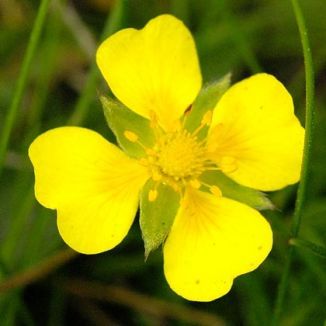
Common Name: Tufted Vetch Scientific Name: Vicia cracca Irish Name: Peasair na luch
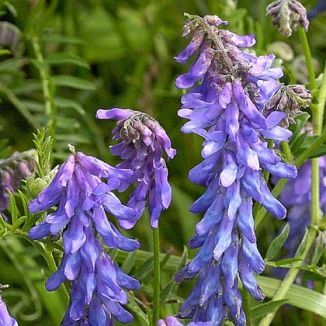
Common Name: Welsh Poppy Scientific Name: Papaver cambricum Irish Name: Poipín Breatnach

Common Name: White Water-lily Scientific Name: Nymphaea alba Irish Name: Bacán bán
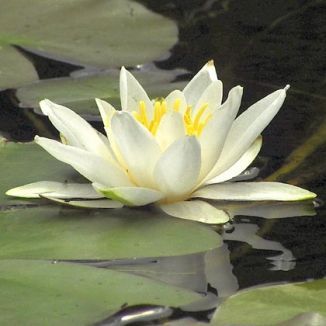
Common Name: Yellow Iris Scientific Name: Iris pseudacorus Irish Name: Feileastram

All images and information in this post regarding Irish wildflowers are courtesy of http://www.wildflowersofireland.net/. Please visit the Wildflowers of Ireland website to learn more about Irish wildflowers.
Sharissa Hall
The Flori Godmother
“May flowers always line your path and sunshine light your day. May song birds serenade you every step along of the way. May a rainbow run beside you in a sky that’s always blue. And may happiness fill your heart each day your whole life through.”
~ Irish Blessing
Post date Mar 17th, 2020 5:54:27pm
1 note
·
View note
Text
Best flowers for bees! Sedums.
Sedums are also excellent plants for rock gardens and walls… Biting stonecrop and English stonecrop (sedums acre and anglicum) are natives, and great for bees. Sedums, common name stone crop, are a very wide-ranging genus of about 400 species with a variety of flowering colours and times. The Sedum illustrated is Ruby Glow which produces spectacular red flowers from late summer into early autumn.Sedums are easy to grow, and are best planted where they will enjoy good sun with soil that is not too dry. Sedums will grow in partial shade but not full shade. Sedum is a very undemanding plant and is virtually maintenance free apart from a trim back in the spring. Sedum will provide great late summer and early autumn colour. A major advantage of Sedums is that they are greatly attractive to bees, hover flies and butterflies, especially when they first start to flower and are full of nectar. It is not unusual to spot several butterflies, a mass of bees and hover flies on a single Sedum plant on a warm autumn day. Sedums are known as the butterfly's friend and they really are a magnet to butterflies. A good place to plant Sedum is near a seat so you can spend time relaxing, watching the bees and butterflies gathering on the Sedums.

5 notes
·
View notes
Text
1. Driftwood, Lottie Bay
A late May walk on a cool, foggy morning, a favorite place ten minutes from home…
If you fly over this corner of Fidalgo Island in a small plane and look down, you’ll see a bay shaped like the curved knife used for chopping vegetables, sometimes called a mezzluna. The knife edge is the beach. A rocky cliff takes a bite out of the edge and a long, narrow pier draws a fine line across the blade and into the bay. (A map is below, for reference.)
A bit of lawn disappears into thick woods surrounding the bay; the quiet water is speckled with rocks. To the west are more islands. In the distance, the Strait of Juan de Fuca disappears into the mist. In the off season the pier is deserted, the waters empty but for an occasional kayaker or small boat, the paths lightly traveled.
2. At anchor in the fog, Bowman Bay
On this foggy morning there was just one other vehicle in the lot. I was effectively alone. We think of fog as removal: it takes away our ability to see clearly, it muffles sounds and obscures things.
But fog brings not-knowing forward, and what does that do? It returns us to the Wonder.
I’m not sure what’s ahead. I slow down.
3. Flowering grass, Bowman Bay
4. The path to Lighthouse Point, nearly overtaken by wildflowers and dune grass.
5. The growth of past seasons mixes with the fresh blades of dune grass on a tangled mess of crumbling driftwood.
Nootka rose and Cow parsnip
A chilly bee rests
Vetch flower
Wild Nootka roses (Rosa nutkana) sprinkle the path like fat, pink polka dots. The pretty magenta flowers of Common vetch (Vicia sativa) are plentiful too, but are almost lost in the welcoming, cloud-like drifts of Cow parsnip (Heracleum lanatum).
Stillness hangs heavy. The air is cool.
At the south end of the beach is a tombolo, an Italian-derived word for a narrow strip of land connecting an island to the mainland. This tombolo, strung between two bays, connects Lighthouse Point to Fidalgo Island. It’s the kind of place where edges have no edge, dancing with the tides, creating and erasing boundaries with the unpredictability of a butterfly’s flight. One day, masses of seaweed wash up onto the beach in spongy, pungent mounds. Another day a windstorm spills bay water into the marshy wetland. Sands shift and reach into the dune grass that lines a path over the tombolo. Waves cut shallow scoops from the shoreline. Forty-foot logs are tossed about like toothpicks, eventually becoming rooted in place by wildflowers growing around them. The rubbery ropes of Bullwhip kelp scribe messages in the sand alongside dainty racoon tracks.
It’s always changing here.
7. A receding tide deposits layers of seaweed on the beach and bares barnacle-studded rocks at the base of the cliff.
8. On top of the cliff the view through the smooth branches of a Madrone tree is fine. Even on a foggy day. Especially so.
9. Splashes of ochre-colored lichens, chestnut-hued moss, wildflowers, grasses and stunted trees provide decor on a cliff to the north of Light House Point.
On the back side of the tombolo a damp wetland gives way to a sheltered cove called Lottie Bay. This bay is fed by the straight whose churning waters barrel through Deception Pass several times a day, carrying water from the Pacific, ninety miles to the west. With its muddy, shallow bottom, the little cove is a favorite spot of gulls, ducks and chattering Kingfishers. On this day Kildeer spew their high-pitched cries into the gray air, raising the alarm at the slightest perception of threat. One bird drags its wing in the classic “broken wing” feint, designed by some mysterious twist of genetic material to draw would-be predators towards the bird pretending to be injured and away from its vulnerable young.
10. Cow parsnip (Heracleum lanatum) is beginning to go to seed. The young plant stems were peeled and eaten like celery by local tribes. Black bears forage on it too, which makes me wonder if the bear that swam ashore near here three weeks earlier might have snacked on this plant. That young bear swam to several other islands before being spotted back on the mainland, near a highway. It was finally darted, captured, and hauled off to the mountains. Life should be easier there, assuming this youngster didn’t get too used to dining on birdseed and trash during his island odyssey.
11. A washed up, barnacle-studded branch is caught in a tangle of dune grass. Another still life to admire, until it all changes again with the next tide.
I return to this magical place at different hours, in fair and foul weather, through all the seasons. Because different habitats are jammed up against one another edge to edge, there are quick, dramatic changes to experience with all my senses. The chill in the air, the scent of low tides, the zippy flight of swallows and the echoing calls of Oystercatchers – it’s always a sensory banquet.
Woods, beaches, a wetland or two, rocky cliffs, a muddy bay, off-shore islands – all in the space of a half mile or so. That’s just what I see on foot, but if I were a seal or an otter, an eagle or a squirrel, then I would have parsed this place into different components. I’d have it memorized by sense instead of names: the place of fast water, the high tree where everything can be seen, the tangle of brush to hide in…
12. A bouquet of wildflowers cascades off a cliff on Lighthouse Point. Delicate pink Streambank Spring beauty (Montia or Claytonia parvifolia) intermingles with the yellow flowers and succulent, blue-green leaves of Broad-leaved stonecrop (Sedum spathufolium). Grasses, Licorice fern and Bedstraw (Galium triflorum) help anchor the mass to the rocks.
13. Delicate Streambank Spring beauty.
14. I believe this is Baltic rush, Juncus balticus. Rushes look like grass until you get closer. They’re “walk right by” plants of cool, damp places that most people don’t notice. In Spring, the discerning eye can find a complex, beautiful architecture in their flowers.
15. The evergreen Sword fern (Polystichum munitum) is ubiquitous in the northwest, thriving in many different habitats. The repeating patterns are irresistible.
16. Seaweed caught on a branch shows just how high the tides can go. This may have happened last winter in a storm. It’s a rather desolate look, but I think it captures the wildness of this place.
***
Ten thousand flowers in spring, the moon in autumn by Wu Men (Hui-k’ai)
English version by Stephen Mitchell
Ten thousand flowers in spring, the moon in autumn, a cool breeze in summer, snow in winter. If your mind isn’t clouded by unnecessary things, this is the best season of your life.
from Poetry Chaikhana Blog
(The poem is a verse from Ordinary Mind is the Way, Case 19 in the Gateless Gate (Mumonkon), a compilation of zen koans compiled over 700 years ago in China by Chinese Zen master Wu-men Hui-hai.)
***
A rough map of the places mentioned in this post
LOCAL WALKS: MORNING FOG A late May walk on a cool, foggy morning, a favorite place ten minutes from home...
0 notes